White perch, known for their tenacity and delightful flavor, is a popular fish species in fresh and brackish environments. These hardy fish are a thrill to catch due to their spirited fight and a pleasure to cook and eat, making them a favorite among anglers.
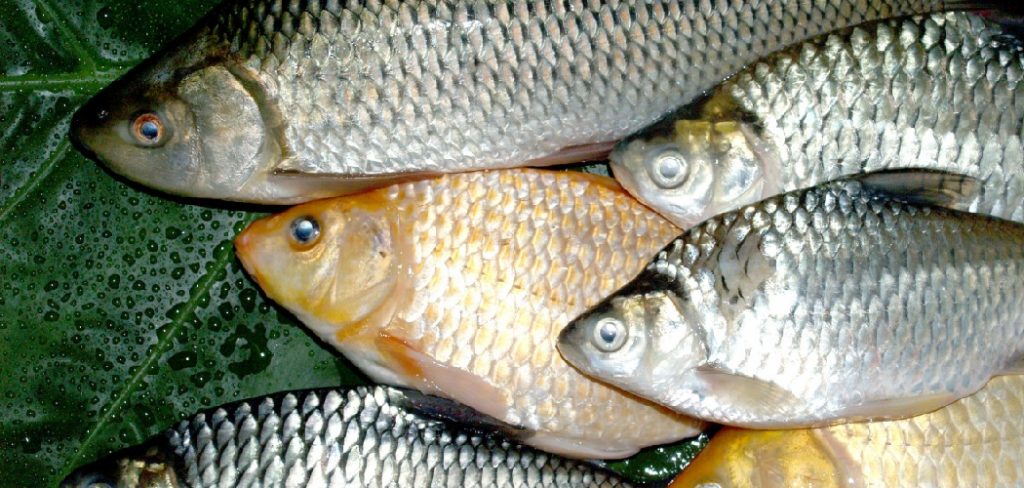
This comprehensive guide aims to equip you with all the knowledge necessary on how to catch white perch successfully. You’ll learn about their habitats, the best equipment to use, effective baits, and various fishing techniques. Additionally, the guide will offer tips on identifying prime locations, seasonal strategies, and handling and cooking white perch.
Catching white perch is a rewarding experience for novice and seasoned anglers. Their abundance and willingness to bite make them an excellent target for recreational fishing. Understanding how to catch white perch can significantly enhance your fishing outings, providing both enjoyment and a sense of accomplishment.
Understanding White Perch
Biology and Behavior
White perch (Morone Americana) are small, stout fish with a silvery body and a characteristic dark, horizontal line running from head to tail. Typically, they grow to about 7-12 inches in length and weigh up to 2 pounds, although larger specimens can occasionally be found.
These fish have a varied diet consisting of small fish, insects, crustaceans, and zooplankton, making them opportunistic feeders. Their spawning season occurs in the spring, from late April to early June, with females laying their adhesive eggs on firm substrates like gravel or submerged vegetation.
Understanding their feeding and spawning habits is crucial for anglers aiming to catch them.
Habitat
White perch are versatile and adaptable, thriving in a variety of environments. They are commonly found in freshwater lakes, rivers, reservoirs, and brackish coastal waters. Look for them in areas with a mix of structures, such as submerged trees, rock formations, and weed beds, where they can find ample food and shelter.
During the warmer months, white perch tend to school in deeper waters, while in cooler seasons, they are often found in shallower areas.
Seasonal Patterns
The behavior of white perch changes with the seasons, and knowing these patterns can significantly improve your catch rates. White perch move into shallower waters to spawn in spring, making this an excellent time to fish for them near shorelines and tributaries. During summer, they tend to retreat to deeper, cooler waters.
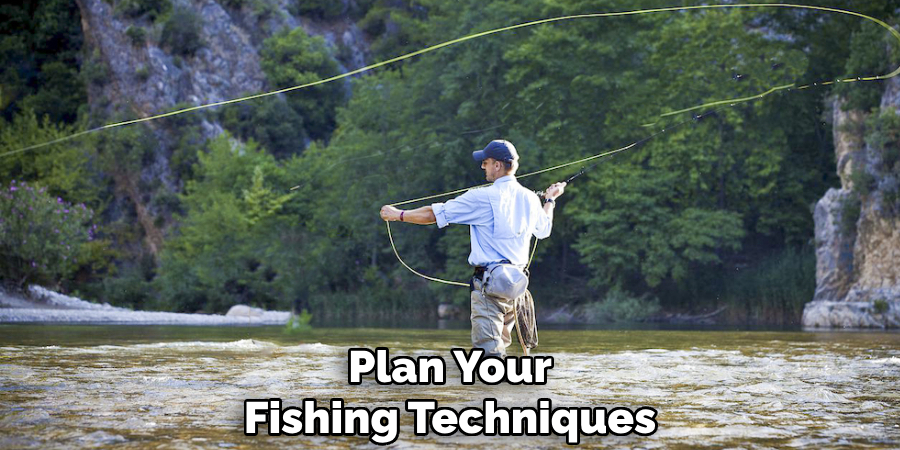
Angling success in summer often requires fishing during early morning or late evening when water temperatures are lower. Fall sees another period of increased activity as white perch feed heavily in preparation for winter, making it a prime time for fishing.
Lastly, in winter, ice fishing can provide opportunities to catch white perch in deeper waters where they gather in schools. Understanding these seasonal changes will help you strategically plan your fishing trips and techniques.
Selecting the Right Equipment
Rod and Reel
Choosing the appropriate rod and reel combo is essential for successful white perch fishing. A light to medium-light rod is recommended to target these relatively small fish. Rods in the range of 6 to 7 feet in length are ideal, offering a good balance between casting distance and control.
The rod’s action should be fast or moderate-fast to provide the sensitivity to detect subtle bites and the backbone to properly set the hook. Regarding reels, a spinning reel with a smooth drag system is preferable. Look for reels with a gear ratio of 5:1 to 6:1, which provides adequate speed and torque for reeling in white perch.
A reel size of 1000 to 2500 is suitable, ensuring the setup is lightweight and comfortable for long fishing sessions.
Fishing Line
Selecting the optimal fishing line is crucial for maximizing your catch rate and minimizing line visibility. Monofilament and braided lines are both viable options, each offering distinct advantages.
The Monofilament line is popular for its flexibility, stretch, and ease of knot-tying. A 4 to 8-pound test monofilament line is typically sufficient for white perch fishing. Conversely, a braided line provides superior strength and sensitivity with a thinner diameter, allowing for longer casts and better bite detection.
For braided lines, a 10 to 15-pound test is recommended, with a fluorocarbon leader of 4 to 6 pounds to reduce visibility underwater and improve presentation.
Terminal Tackle
The right terminal tackle is essential for a successful fishing outing. For white perch fishing, size 6 to 8 hooks are generally suitable, with bait holders or worm hooks being effective choices for live bait. When fishing with soft plastics or small jigs, opt for hooks that complement the size of the artificial bait.
Additionally, a selection of split shot sinkers and small egg sinkers will help you achieve the desired depth and presentation. Swivels, particularly barrel swivels, prevent line twists and ensure smooth bait movement.
Stocking a variety of hooks, sinkers, and swivels will prepare you for different fishing conditions and techniques, enhancing your ability to catch white perch successfully.
How to Catch White Perch: Best Baits and Lures for White Perch
Live Bait
Using live bait is one of the most effective methods for catching white perch. These opportunistic feeders are attracted to live bait’s natural movement and scent, making it an irresistible option.

Minnows are particularly effective, mimicking the small fish that white perch commonly prey upon. When using minnows, hooking them through the lips or behind the dorsal fin can enhance their natural movement and increase your chances of attracting a bite. Worms are another excellent live bait choice.
Nightcrawlers and red worms are highly effective, especially when fished on a small hook just off the bottom. Small crayfish can also be highly productive, particularly in waters where white perch have been observed feeding on crustaceans.
Hook the crayfish through the carapace’s tail or back to allow for a more natural presentation.
Artificial Lures
Artificial lures offer versatility and can cover a wide area when targeting white perch. Small jigs are among the most popular artificial lures for white perch fishing. Jigs in the 1/32 to 1/8 ounce range, dressed with soft plastic grubs or curly tails, can be highly effective when fished with a slow, steady retrieve or a hopping action along the bottom.
Spinners, such as inline spinners, also work well due to their flash and vibration, which attract white perch from a distance. Opt for smaller sizes, like 1/16 to 1/8 ounce, and experiment with different colors to match the prevailing water conditions and light levels.
Soft plastics, including small swimbaits, tube baits, and paddle tails, can mimic the appearance and movement of prey species. Rig these on light jigheads or small hooks and retrieve them slowly to entice bites. The key to success with artificial lures is to vary your presentation until you find what the fish are responding to.
Scented Baits
Incorporating scented baits and attractants into your fishing strategy can significantly increase your bite rates when targeting white perch. Scented soft plastics, such as those infused with garlic, anise, or fish oil, can make your lures more appealing by masking unnatural odors and emulating the scent of natural prey.
Gel or liquid attractants can also be applied to live bait or artificial lures to enhance their attractiveness. Products like fish attractant sprays or tubes of gel can be used to coat your bait, creating a scent trail that draws white perch from a distance.
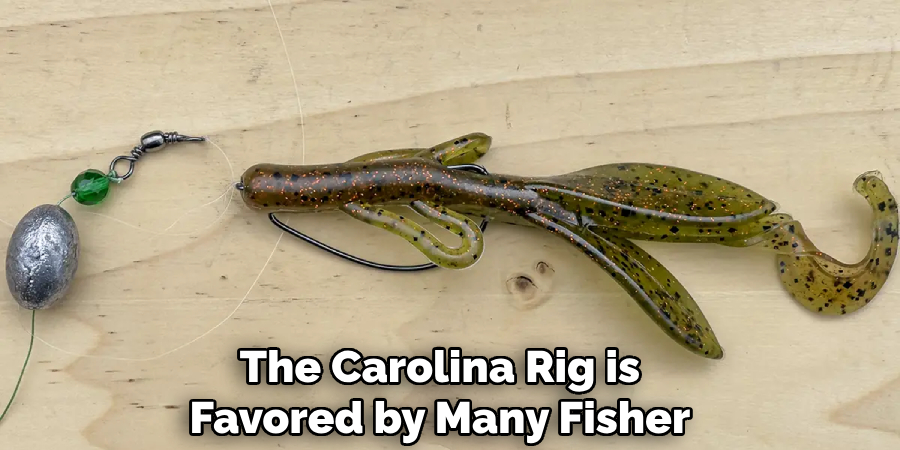
Another effective method is to use bait that is pre-soaked in scent. For example, marinated minnows or worms soaked in fish oil can provide a significant advantage by continuously releasing scent into the water.
Scented baits are particularly useful in murky water or low-light conditions, where visibility is limited, and fish rely more heavily on their sense of smell. By integrating scented baits and attractants into your arsenal, you can improve your chances of a successful catch, even when fishing conditions are challenging.
How to Catch White Perch: Techniques for Catching White Perch
Still Fishing
Still, fishing is a time-honored method for catching white perch, relying on live bait or cut bait to entice fish. This technique involves casting your baited hook and allowing it to remain stationary in the water, appealing to the white perch’s natural feeding habits.
Using the correct setup is essential: suspending your bait just off the bottom or mid-water column with a float or bobber can help keep it in the strike zone. For instance, when using live bait like minnows or worms, attach a small split shot sinker about 18 inches above the hook to keep the bait at the desired depth.
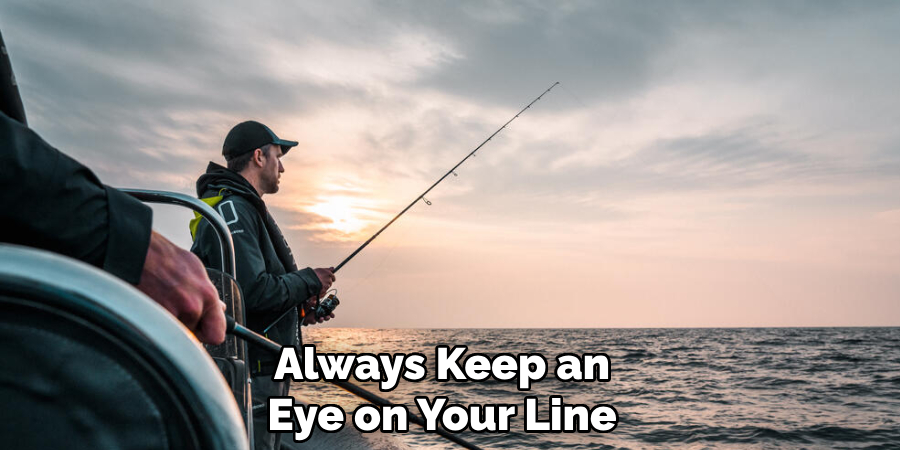
Always keep an eye on your line or bobber for any signs of movement, indicating a bite. Consistently checking and adjusting the depth based on fish activity will increase your chances of success. Remember to be patient and ready to set the hook once you perceive a nibble.
Jigging
Jigging is an effective and dynamic method for targeting white perch, allowing anglers to cover various depths and areas. The key to successful jigging lies in your ability to mimic the natural movement of prey. Vertical jigging involves lowering your jig to the desired depth and then employing an up-and-down motion to attract fish.
For example, you might drop a 1/16-ounce jig dressed with a soft plastic grub to the bottom, then lift your rod tip 6-12 inches and let the jig fall back naturally. This action replicates the movement of small creatures white perch feed on.
Alternatively, casting jigging allows for broader coverage areas. Cast your jig out and retrieve it with intermittent pauses and twitches to imitate a wounded or escaping prey. Experimenting with retrieval speeds and jigging actions can help determine what the fish are responding to on any given day.
Trolling
Trolling is an efficient method to locate and catch white perch, especially in large water bodies. This technique involves slowly moving your boat while dragging lures or baited rigs behind it. Maintain a trolling speed between 1 to 2 mph, which is typically effective for white perch. Lure selection is crucial; small crankbaits, inline spinners, and jigs work well.
Ensure your lure runs at the proper depth, which may involve using weights or downriggers. Additionally, a fish finder can be used to monitor underwater structures and schools of perch. By varying your depth and speed and zigzagging your trolling path, you can cover a larger area and increase your chances of encountering active fish.
Remember to periodically check your lines for debris and make adjustments as necessary to maintain optimal lure action.
Fly Fishing
Fly fishing for white perch offers a unique and rewarding experience, combining skill with subtlety. When fly fishing, choose flies that imitate the small baitfish and aquatic insects that white perch feed on. Streamers, small poppers, and wet flies are excellent choices.
An appropriate setup includes a lightweight fly rod (3 to 5-weight), matched with a floating line and a tapered leader ending in a 4 to 6-pound tippet. Presentation is critical: cast your fly near structures, such as submerged logs or weed beds, where perch are likely to hide.
Retrieve the fly with gentle, varied strips to mimic the movement of natural prey. Pay close attention to any movement or resistance in the line, indicating a strike. Fly fishing challenges your precision and patience, but successfully hooking a white perch on a fly provides immense satisfaction.
Identifying Prime Fishing Locations
Finding Hotspots
Locating prime white perch habitats is essential for a successful fishing trip. White perch are often found near structures that offer cover and attract prey, such as submerged trees, drop-offs, and weed lines. These structures provide an environment where perch can easily ambush their prey.
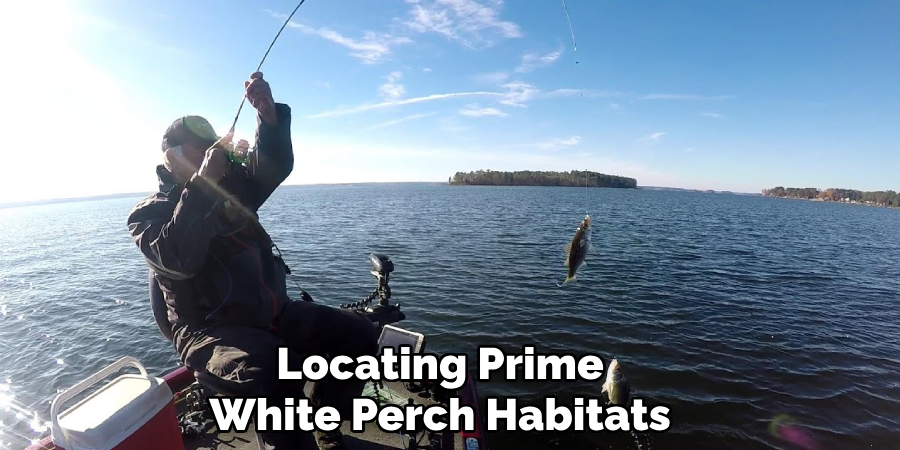
When scouting for hotspots, pay close attention to changes in the underwater landscape. Drop-offs, where shallow water suddenly becomes deeper, are particularly attractive to white perch. Similarly, weed lines offer a habitat rich in food and protection.
Submerged trees or stumps can also be prime locations as they provide pockets of shelter and create an ideal ambush point for feeding perch. Keeping an eye out for these features in your fishing environments can greatly enhance your chances of success.
Using Electronics
Utilizing modern technology can significantly improve your ability to locate schools of white perch. Fish finders and sonar devices can help identify underwater structures and detect the presence of fish. When using fish finders, look for clusters of arches or dots on the screen, which usually indicate a school of fish.
Adjust the sensitivity settings to differentiate between structures and fish. Side-imaging sonar can be particularly useful for scanning larger areas more efficiently, giving you a detailed view of the underwater landscape.
Pay attention to depth changes and bottom compositions, as these can signal feeding zones for white perch. By effectively interpreting the data from these devices, you can pinpoint locations that likely hold fish, thereby reducing the time spent searching and increasing your fishing productivity.
Shore vs. Boat Fishing
Fishing for white perch can be effectively done from both shore and a boat, each offering distinct approaches and strategies. When fishing from the shore, patience and precision in casting are crucial. Look for accessible spots near drop-offs, submerged structures, or weed beds.
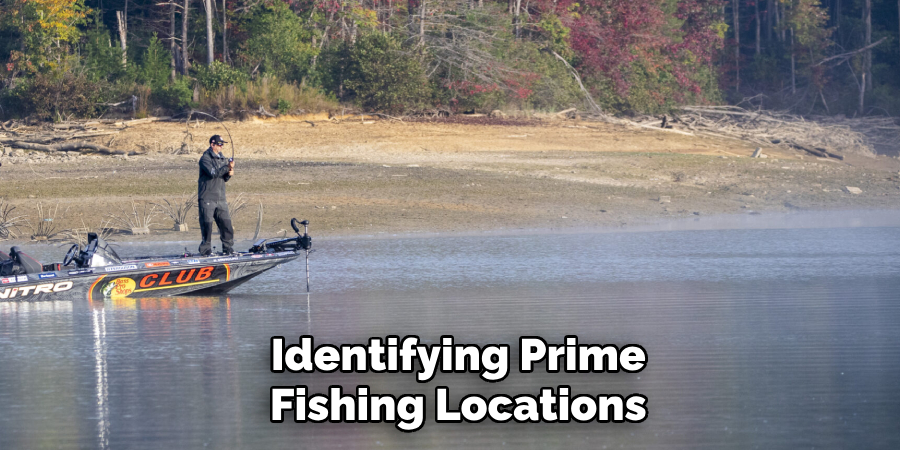
Shore anglers often rely on a combination of still fishing and casting techniques, targeting specific spots where perch are likely to congregate. Shore fishing is often more about finding the right spots and waiting for the fish to come to you.
On the other hand, boat fishing provides greater mobility and flexibility to cover larger areas and different depths. Trolling, jigging, and casting can all be effectively employed when fishing from a boat.
Moving around allows you to follow schools of white perch and position your boat over prime fishing spots identified through fish finders. Additionally, boat fishing provides easy access to deeper waters that are typically out of reach for shore fishermen.
By understanding the unique advantages and strategies associated with both shore and boat fishing, anglers can maximize their chances of landing a successful catch of white perch.
Seasonal Strategies for White Perch
Spring
Spring is an exceptional time to fish for white perch as they exhibit pre-spawn and spawning behaviors. During the pre-spawn period, white perch move towards shallow waters, often congregating near river mouths, bays, and tributaries where they will eventually spawn.
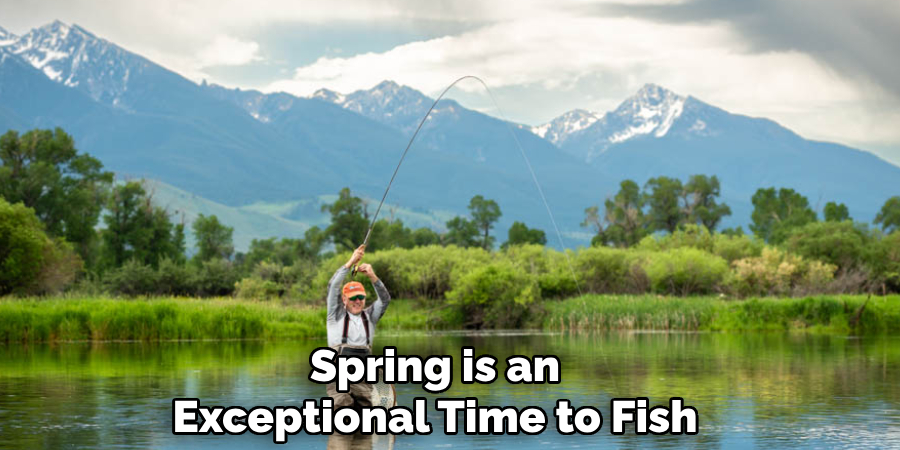
Target these areas using small jigs, spinners, or live bait like minnows and worms. As the water temperatures rise, usually between 50-60°F, spawning begins, and perch becomes even more accessible in shallow water.
Focus on sandy or gravelly bottoms where they prefer to lay eggs. Employ light tackle for a more rewarding challenge, and consider using a bobber to suspend your bait just above the bottom, which helps keep it in the strike zone.
Summer
In the summer, white perch transition to post-spawn patterns and often move to deeper waters to find cooler temperatures. Fishing in 10-20 feet of water can be effective, particularly near submerged structures or drop-offs where perch seek refuge from the warm surface temperatures.
Vertical jigging with spoons or soft plastics is a productive technique during this period. Trolling small crankbaits or spinners at various depths can help cover more water and locate schools of fish. Additionally, fishing during the early morning or late evening hours, when water temperatures are relatively cooler, tends to yield better results as perch are more active during these times.
Fall
As fall approaches, white perch enters a feeding frenzy in preparation for the colder months. They often school up and feed aggressively, making them easier to catch. Focus on areas with abundant baitfish, such as near weed beds, docks, or submerged timber.
Prime locations include transitions between deeper and shallower waters. Using fast-moving lures like crankbaits and spinners can effectively mimic the movement of fleeing baitfish and trigger strikes. Adjust your tactics to include larger baits as perch are aiming to build fat reserves, and don’t hesitate to experiment with varied retrieval speeds to keep the fish interested.
Winter
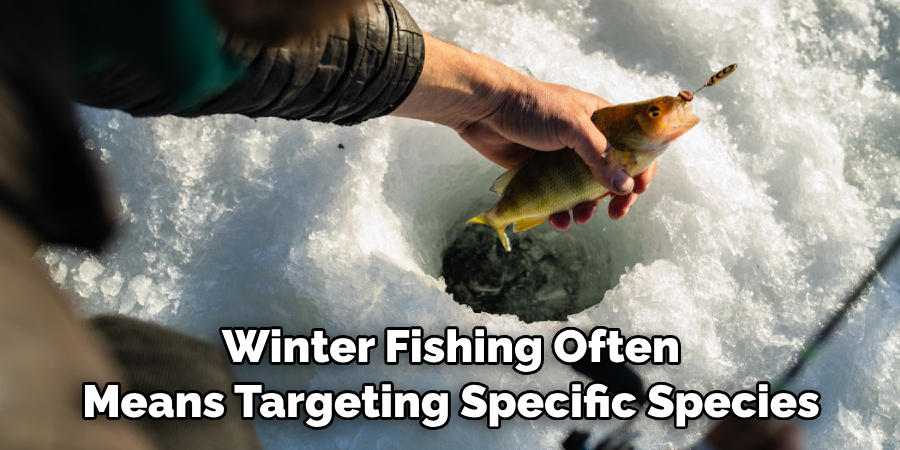
Winter fishing for white perch typically involves ice fishing, which demands specific gear and safety precautions. Essential gear includes ice augers, ice rods, and tip-ups. Safety gear, such as ice cleats, a flotation device, and a spud bar to test ice thickness, is critical. Focus on deeper basins and drop-offs where white perch tend to gather.
Use small jigs tipped with wax worms or spikes, and consider adding a subtle jigging motion to attract fish. Electronics, like flashers or underwater cameras, can help locate schools of perch under the ice. Always prioritize safety by fishing with a partner and staying informed about ice conditions.
Tips for Success
Reading the Water
Understanding water conditions plays a critical role in successful white perch fishing. White perch behavior is influenced by a variety of factors, including water temperature, clarity, and current. Clearwater usually demands a more subtle approach, utilizing lighter lines and smaller, more natural-looking baits.
On the other hand, murkier water allows for more aggressive tactics, with brighter lures and larger baits being more effective. Pay attention to natural signs such as the presence of baitfish or feeding birds, which often indicate an active feeding zone for perch. Also, be mindful of underwater structures like weed beds, submerged logs, or rock formations, which can serve as ambush points for feeding perch.
By correctly interpreting these water conditions, anglers can strategically choose their spots and increase their catch rates.
Time of Day
The time of day can greatly influence white perch activity and success rates in fishing. Dawn and dusk are prime times for white perch because these periods typically see cooler temperatures and lower light levels, conditions in which perch are more actively feeding.
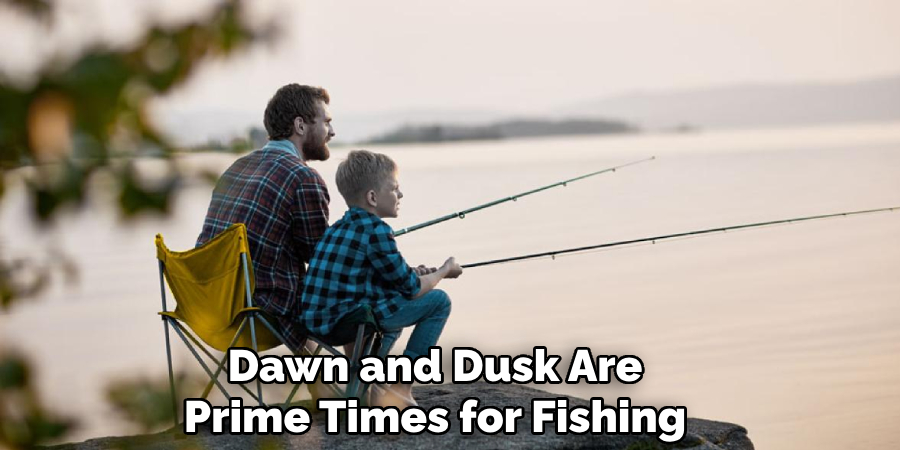
Early morning, just after sunrise, is often ideal for shallow water fishing, as white perch tend to move into these areas to feed. Similarly, late evening, just before dusk, can also be highly productive. Night fishing for white perch can be surprisingly effective, especially with the use of lights to attract fish near docks or piers.
Lights attract plankton, which brings in baitfish and creates a feeding zone for predatory white perch. By aligning your fishing schedule with these peak activity times, you can significantly enhance your chances of a successful outing.
Adjusting Techniques
Adapting fishing techniques based on varying conditions can differentiate between a successful fishing trip and coming home empty-handed. Weather changes, such as bright sunny days versus overcast conditions, can dictate the color and type of lure used. For instance, brighter and more reflective lures may be more effective during overcast weather, while natural and subtle colors work better in clear, sunny conditions.
Water clarity also affects lure selection, with vibrant colors and strong scents being more useful in murky waters. Adjusting your techniques to include faster or slower retrieval speeds can also respond to the fish’s mood and activity level. Windy conditions may require heavier weights to maintain lure depth and control casting accuracy.
Being flexible, observant, and willing to tweak your approach based on real-time observations will improve your odds of consistently landing white perch.
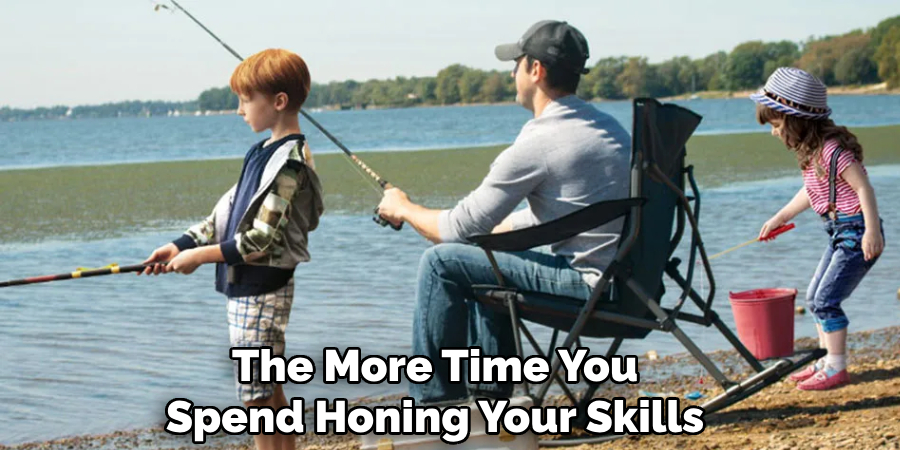
Conclusion
In this guide, we’ve covered a broad range of tips and techniques on how to catch white perch.
From understanding their preferred habitats and recognizing seasonal patterns to choosing the right tackle and employing effective fishing methods like fishing near structures and using appropriate baits and lures, each section has provided vital information for enhancing your fishing experience.
Armed with this knowledge, we encourage you to get out there and put these strategies to the test. Practice makes perfect, and the more time you spend honing your skills, the more successful you’ll become at catching white perch. Remember, every fishing trip is an opportunity to learn and improve.
Consistency in how to catch white perch often comes down to patience, adaptability, and a willingness to experiment with different techniques. Always be mindful of ethical and sustainable fishing practices to ensure the health of white perch populations. Keep refining your approach, stay curious, and most importantly, enjoy the process of becoming a better angler. Happy fishing!
About the Author
Jennifer Branett is the author of Fishy Kayak and an expert in fish-related fields, with over 10 years of experience. Her work blends passion for fishing with a commitment to conservation.
Educational Background
Degree: Bachelor’s in Marine Biology
Institution: University of California, Santa Barbara
Specializations: Aquatic ecosystems, fish behavior, and sustainable practices
Professional Experience
Conservation Projects:
Collaborated with local organizations to restore aquatic habitats
Developed educational programs on sustainable fishing practices
Publications:
Authored articles for fishing magazines and environmental journals
Featured speaker at fishing expos and conservation conferences
Key Areas of Expertise
Fishing Techniques:
Kayak fishing strategies
Freshwater and saltwater fishing methods
Environmental Stewardship:
Advocacy for sustainable fishing
Promoting biodiversity in aquatic environments
Awards and Recognition
Recipient of the [Specific Award Name] for contributions to marine conservation
Recognized as a leading voice in the fishing community by [Organization/Publication Name]
Community Engagement
Workshops and Seminars:
Regularly hosts events to educate anglers on sustainable practices
Engages with youth programs to inspire the next generation of fishers
Online Presence:
Maintains an active blog sharing tips, stories, and conservation efforts
Engages with followers on social media to promote fishing ethics
Personal Interests
Enjoys kayaking in scenic locations
Passionate about photography, capturing the beauty of nature
Advocates for local conservation efforts in her community
